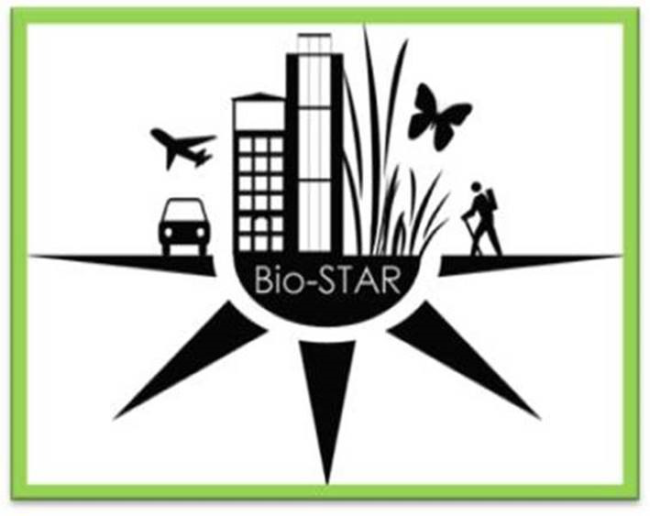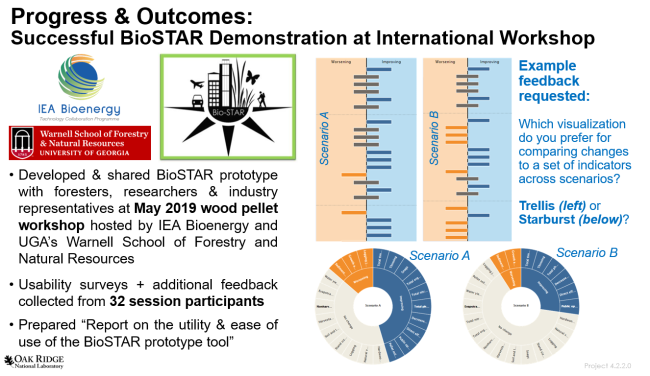
BioSTAR
Bioenergy Sustainability Tradeoffs Assessment Resource
The Bioenergy Sustainability Tradeoffs Assessment Resource (BioSTAR) tool has been developed by Oak Ridge National Laboratory (ORNL) with the support of the US Department of Energy’s BioEnergy Technologies Office (DOE BETO). BioSTAR is designed to help stakeholders quantify and visualize the potential sustainability benefits and tradeoffs of cellulosic biomass production systems.
For additional information, please contact Dr. Esther Parish.

Use BioSTAR
The BioSTAR tool will help stakeholders quantify and visualize the potential sustainability benefits and tradeoffs of cellulosic biomass production systems.
This 12-minute tutorial will walk you through how to use the BioSTAR tool to explore an existing project or add a new project.

BioSTAR Prototype
This BioSTAR prototype contains interactive information about 4 ORNL sustainability case studies. This Usability Script will walk you through an example of Southeast US wood pellet production.